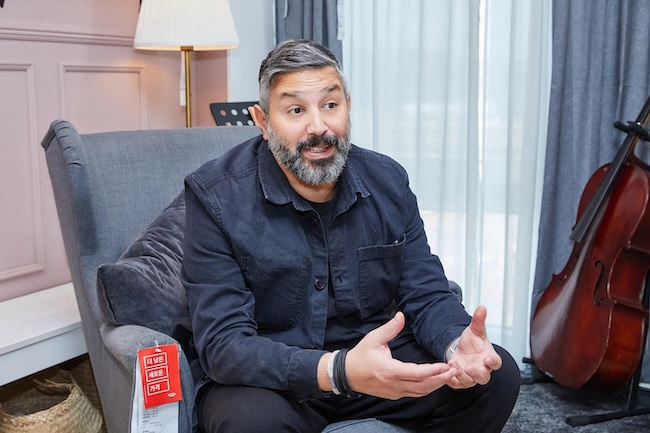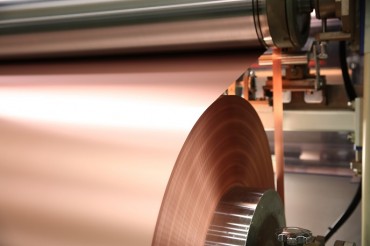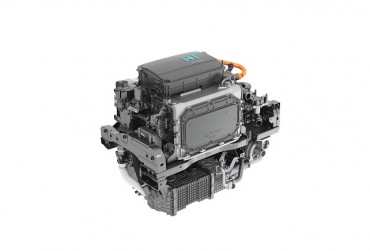
This photo taken March 16, 2024, and provided by IKEA shows Tolga Oncu, IKEA retail operations manager at Ingka Group, during an interview with Yonhap News Agency at the IKEA Goyang outlet, just north of Seoul. (Image courtesy of Yonhap)
SEOUL, Mar. 19 (Korea Bizwire) — Swedish furniture giant IKEA will invest 300 million euros (US$327 million) in South Korea over the next three years to gain a bigger share in Asia’s fourth-biggest economy, the company’s retail manager has said.
IKEA, which will celebrate 10 years in business here in December, currently operates four stores — three near the capital of Seoul and one in the southern port city of Busan. It plans to add a fifth one in Seoul next year.
“We are investing 300 million euros that coming three years (through 2026) to see how we actually create new formats that can bring IKEA closer to where people live, work or socialize in order to complement the existing blue boxes that we have,” Tolga Oncu, IKEA retail operations manager at Ingka Group, told Yonhap News Agency in a recent interview.
Blue boxes refer to IKEA stores, which look like big blue boxes.
The planned investment will be spent on the upcoming store and “new formats,” including pop-up stores in shopping centers or on the street with specific themes and small IKEA stores, which are from 5,000 square meters up to 10,000, to attract customers.
Through these smaller formats, the company will have an opportunity to be much closer to Korean customers as they still offer a “big enough” IKEA experience, Oncu said.
In the past fiscal year that ended in August 2023, IKEA’s sales fell to 600.7 billion won ($450 million) in Korea from 622.3 billion won a year earlier. In the 2022 fiscal year, sales also declined from 687.2 billion won a year ago.
Operating profit plunged to 2.59 billion won from 21.8 billion won during the same period.
The company said the reverse growth was mainly due to high utility prices and high inflation in the past two years, which resulted in less purchasing power for many consumers amid an economic slowdown.
Despite the weak sales, IKEA is investing up to 7 million euros to lower its product prices in Korea until the 2024 fiscal year, which is in line with Ingka Group’s global price policy.
In Korea, IKEA cut the prices of about 300 products in December and plans to increase the number to 800 in coming weeks or months. In other countries, IKEA has lowered prices on an average of 1,000 products.
“No doubt, price cuts are impacting on profitability, but this is a choice that IKEA has taken in times like this. The company wants to focus more in affordability by lowering the prices than focusing only on profitability,” the executive said.
The company said becoming even more affordable with its products without compromising on quality is a way to continue to grow in the long term as it did in the past 80 years.
Ingka Group, the owner of most IKEA stores, aims to bring prices back to “inflation-adjusted” pre-pandemic levels by the end of next year.
Ingka Group has 379 stores in 31 countries. The total number of IKEA stores, including Ingka’s, around the world reaches 471 in 63 markets.
Globally, the unlisted Ingka Group saw its overall sales rise to 41.7 billion euros in the 2023 fiscal year from 39.5 billion euros a year ago.
“We use the opportunity of not being a listed company and not have to think only short term, but we really think long term. When the economy turns, we will stand on a much bigger (customer) base and can actually continue serving more people,” he said.
A majority of IKEA’s annual earnings is spent on investments, marketing and social contribution activities as it has no shareholders who are putting their demands on what the company should do, the company said.
In Korea, IKEA has invested on enhancing automation at its existing outlets, which can lead to lower costs.
For retailers, Korea has been a good example when it comes to last-mile deliveries and transformation into omni-channel retailing, the Swedish native said.
“When it comes to the last mile, their home deliveries and the transformation into electric vehicles (EVs) where we today cover the whole Korea with 50 percent of our deliveries being done with EVs, and the fast growing number reaching our aim to be 100 percent EV delivery (by 2025),” he said.
From the retail point of view, Korea has taught IKEA as well the whole transformation into the omni-channel retailing, where smartphones are playing a much more important role than in many other countries.
The company seeks to be equally successful in the physical world as it will be in the digital world, he said without giving any specific numbers.
Helped by the advanced local infrastructure and its investments for price cuts, IKEA expects to report positive earnings results in the 2024 fiscal year.
“We can already see the first indications that the response from consumers are quite positive so we see an increase of visitations to IKEA compared to before lowering the prices. These are a good indication that gives fuel to our optimism for also fiscal year 2024,” he said.
Asked about challenges from smaller rivals, such as Japanese furniture retailer Nitori Holdings, IKEA said it welcomes any player who is going to increase the importance of home.
Nitori opened its first store in Korea in November with a plan to expand the number to 200 over the next 10 years.
“As a retailer, of course having competition will just make IKEA even better. Maybe we discover things we are not good enough at, and we can improve them,” Oncu said.
(Yonhap)






